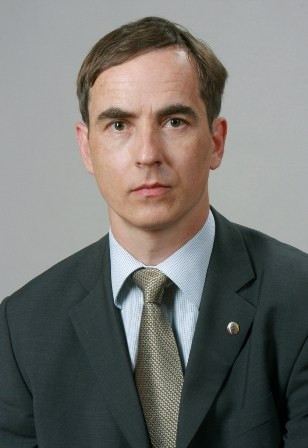
The region surrounding the Lithuanian capital, Vilnius, is unique in Lithuania not only because of its size but also its multicultural character. The largest regional authority in the Amber Republic has over 100 000 inhabitants, of whom 52% are Polish, over 32% Lithuanians, around 8% Russians and just over 4% Belarusians. There are also smaller numbers of Ukrainians (0.65%) and Tatars (0.4%).
The latter are the descendants of Tatars brought to Lithuania by Grand Duke Vytautas the Great in the late 14th century as his personal bodyguard. The Vilnius region is thus unique in terms of its history, culture, languages, customs and religion. The outstandingly beautiful, hilly landscapes of the Vilnius region are adorned by the pointed towers of Catholic churches topped by crosses, and domed Orthodox churches with their characteristic diagonal-beamed crosses, as well as a few wooden mosques in the villages of Nemėžis and Keturiasdešimt Totorių, where the descendants of Vytautas' valiant knights go to pray.
The local authorities of the region, which I have the honour to represent at the European Committee of the Regions, aware of the unique historical and cultural heritage of the region, endeavour to cultivate and promote it. They have already been doing this for several decades, and it is worth noting that, since our country obtained its independence in 1990, all the local elections in the Vilnius region have been won by the Electoral Action of Poles in Lithuania - Christian Families Alliance (AWPL-ZRCH) political group. This is a regional party of Lithuanian Poles, but also representatives of other national minorities, and of course also Lithuanians.
The AWPL-ZRCH group's consistent and convincing success with the electorate can be partly explained by the fact that it is particularly sensitive to the Vilnius area's multicultural character, and seeks to preserve it. This is demonstrated by the fact that every year more than 50% of the regional authority's budget allocation goes on education, which has three dimensions. Teaching in the region's state-funded educational institutions takes place in three languages: Lithuanian, Polish and Russian. In this way all children are guaranteed the right to pursue their secondary education in their mother tongue, which is a precondition for preserving the ethnic identities of the individual diasporas.
This trilingual model obviously requires significant investment, but the local authority willingly accepts the increased expenditure in this area. It also understands that, if national minorities are to feel safe and comfortable in their little homelands, three things have to be guaranteed: education in their mother tongue, the opportunity to use the language of their national minority in their close-knit community, and the ability to promote their culture. In spite of various difficulties with the central government in this area (e.g. the Lithuanian parliament's repeal of the Law on National Minorities following the country's accession to the EU), the local authority is trying to create this security of identity for national minorities.
Support from the various EU programmes has been helpful in this respect. EU and local authority funds have been used to modernise educational establishments, kindergartens have been built, the entire school infrastructure is being extended and modernised. For example, sports fields and gymnasiums, playgrounds and cycle tracks etc. are being built. In effect, thanks to EU support, our region is undergoing a transformation. More than EUR 70 million has been invested in the region from EU funds since 2007. In the last few years alone a folk arts centre has been built at the Houvalt manor in Maišiagala with co-financing from EU programmes (EUR 967 000). A new biathlon shooting range has been built at Nemenčinė (with EUR 312 000 from the EU), as have seven new sports fields (EUR 499 000).
EU funds are of course also being invested in cultural projects, which in our region, like education, have three dimensions. This can best be seen in the context of our main annual celebration, the harvest festival. The popular Dozhinki festival encapsulates the culture, history and customs of the Vilnius region in all their diversity. At the festival individual municipalities from the Vilnius region present not only the year's harvest, but also their rich multi-ethnic artistic skills. At the festival you can listen to jolly, boisterous Polish folk songs performed by the many folk music ensembles of the region, fall into a melancholy reverie over wistful Lithuanian laments or dance to the rhythm of the gopak performed by Russian masters of the dance. You can also sample the delights of various ethnic delicacies, such as Lithuanian dumplings, Polish poppy-seed cake and Russian bliny. You can marvel at the richness of the creations of masters of different cultures and nationalities.
One thing that is absolutely unique to the Vilnius region, from the cultural point of view, is the Vilnius Easter palms which the women of the region have been weaving for generations. Vilnius palms are so beautiful, original and individual that the Lithuanian authorities have applied to UNESCO to have them included on the World Cultural Heritage list.
We invite you to visit the Vilnius region to experience for yourself its diverse cultures and peoples.
Tadeusz Andrzejewski is a member of Vilnius district municipal council and a member of the European Committee of the Regions, where he belongs to the European Conservatives and Reformists Group. At the Committee he participates in the work of the Commission for Citizenship, Governance, Institutional and External Affairs (CIVEX), and the Commission for Social Policy, Education, Employment, Research and Culture (SEDEC). He is a journalist and columnist, inter alia for the Tygodnik Wileńszczyzny and the L24 internet portal.

